What is the economic contribution of wilderness to Alaska’s economy? Tourism by nonresidents is the primary link that we consider between wilderness and the Alaska economy, although subsistence harvests and resident recreation clearly generate value for Alaskans. Here, we synthesize and apply existing data and research. We do not consider global ecosystem services provided by park lands and waters, nor do we assess activity that is not captured within the Alaska economy.
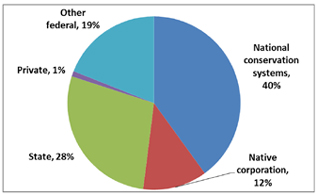
Figure 1 shows the allocation of Alaska’s 375 million acres. Approximately 40 percent are in federal conservation units, and approximately 38 percent of these 150 millions acres are designated wilderness. The Alaska National Interest Lands Conservation Act (ANILCA) of 1980 added most newly designated conservation units in the form of national wildlife refuges. The second most important category of additions was new national parks and preserves.
Wilderness and Tourism
The Alaska visitor industry is the only private sector basic industry that has grown almost continuously since statehood and continues to grow. Almost 1.6 million visitors came to Alaska in summer 2011, and 91 percent of them came primarily to see the state’s mountains, glaciers, and wildlife (McDowell Group 2012). Alaska’s visitor industry accounted for an estimated 37,800 full- and part-time jobs from May 2011 to April 2012, including all direct, indirect, and induced employment. Estimated peak employment was 45,000. These jobs resulted in total labor income of $1.24 billion. Visitors spent $1.7 billion in Alaska, most of it in the summer months (McDowell Group 2013).
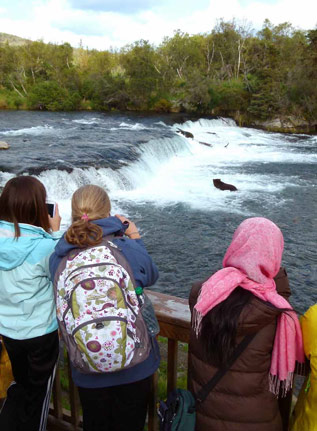
NPS Photo / Bob Winfree
While these economic impacts cannot be completely attributed to the presence of designated wilderness, wilderness characteristics are a significant driver of Alaska visitation. In the summer 2001 Alaska Visitor Statistics Program (AVSP) Visitor Opinion Survey, specific questions regarding wilderness were included. For over 80 percent of respondents, Alaska’s wilderness character and the opportunity to see or spend time in wilderness places influenced their decision to come to Alaska and was an important factor in trip planning (Table 1). Wilderness was also important to a decision to visit Alaska again in the future by 73 percent of respondents. Protecting the wilderness character of Alaska was also important to 87 percent respondents. Most also of strongly supported rationing the use of popular wilderness areas to protect the natural environment (80 percent) and animal populations (84 per-cent). Rationing use to protect opportunities for visitors to be alone and away from crowds was also supported (47 percent) but not as strongly.
Data from summer 2012 confirms that Alaska tourism activity revolves around Alaska’s national parks, especially Denali (433,000 visitors) and Glacier Bay (359,000 visitors) (McDowell, 2013). Our analysis of summer 2001 expenditure diaries collected by AVSP suggests that more than half the total amount spent by tourists in Alaska comes from people who visit Denali. Visitors to Denali in summer 2001 stayed in Alaska for an average of fourteen days, while all other visitors averaged only eight days. Denali visitors spent $2,300 per party per trip, compared with only $1,100 spent by all other visitors. Similarly, visitors to Katmai National Park and Preserve also spent more days in Alaska and had higher expenditures per trip than the average Alaska visitor (Fay and Christensen, 2010).
Several other studies confirm the economic significance of other parks and wilderness areas in Alaska. Fay and Christensen (2010, 2012) found that Katmai National Park and Preserve generated $52.1 million in annual visitor spending, providing approximately 650 jobs and $24.3 million in labor income (Figure 2).
| Criteria | Importance | ||||
|---|---|---|---|---|---|
| tbd | Most | Very | Medium | Somewhat | Not |
| Importance of the wilderness character of Alaska in making the decision to visit Alaska | 16 | 27 | 20 | 20 | 17 |
| Importance of the possibility of seeing or spending time in wilderness places in making trip plans | 12 | 12 | 24 | 24 | 18 |
| Criteria | Strongly disagree | Disagree | Neutral | Agree | Strongly agree |
|---|---|---|---|---|---|
| The opportunity to visit or see wilderness would be important to my decision to visit Alaska in the future | 2 | 4 | 21 | 39 | 34 |
| I do not think the wilderness character of Alaska is important to protect | 50 | 37 | 8 | 2 | 3 |
| Use of popular wilderness areas in Alaska should be rationed if needed to protect the natural environment | 2 | 4 | 14 | 49 | 31 |
| Use of popular wilderness areas in Alaska should be rationed if needed to protect natural animal populations | 1 | 3 | 13 | 43 | 41 |
| Use of popular wilderness areas in Alaska should be rationed if needed to protect opportunities for visitors to be alone, away from crowds | 4 | 12 | 37 | 31 | 16 |
Source: Alaska Visitor Statistics Program, summer 2001 data.
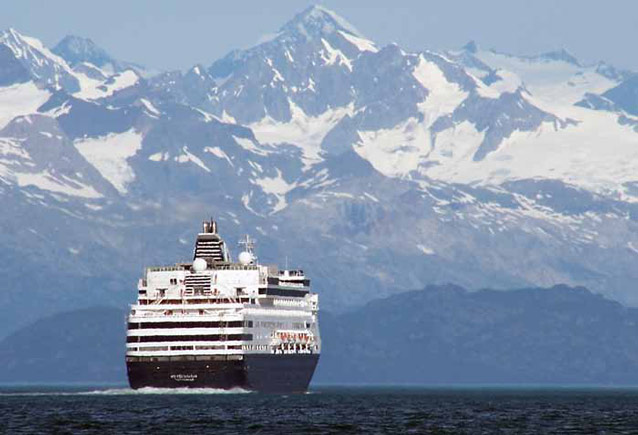
NPS Photo / Bob Winfree
Goldsmith and Martin (2001) used a time-series approach to assess the effect of Kenai Fjords National Park on the growth of the economy of Seward, Alaska. They found a number of indications that the tourism industry grew rapidly throughout the 1980s and sustained the Seward economy through the 1990s:
"Most of the economic growth, particularly since 1990, has been driven by the visitor industry. Although there is no direct way to track this industry, employment in trade, services, and transportation—the sectors that provide the most visitor-related jobs—grew at an annual rate of 5.9 percent. Retail sales from summer visitors have grown at a 9.9 percent annual rate (inflation adjusted) since 1987. Park tourism is a $52 million-a-year business for Seward."
Goldsmith, Hill, and Hull (1998) analyzed the economic activity associated with the Alaska Peninsula, Becharof, Izembek, and Togiak Wildlife Refuges. They found that these four refuges supported 3,225 average annual jobs and $127 million of personal income in 1997. Commercial fishing accounted for about 90% of the jobs and income. The remaining 362 jobs were attributed to sport fishing, refuge management, subsistence-related activities, and hunting. If subsistence activity were treated as wage labor, it would equate to an additional 750 jobs, and the authors estimated that subsistence also generated more than $50 million in net economic value.
One of the earliest and most thoughtful studies of the effects of wilderness on tourism was the master’s thesis done by Larry Bright (1985). Bright attempted to measure changes in tourism use patterns resulting from the creation of six designated wilderness areas within the Tongass National Forest. He collected primary data directly from tourism business operators.
Bright was very careful not to read too much into his survey results. Nonetheless, he concluded:
"I have come to the conclusion that designation [of Misty Fjords Wilderness] has played a significant role [in the increased use of the area]….The dramatic jump in Misty Fjords use occurred during and immediately following the designation (1980/81), while use in surrounding areas continued to grow at a much slower pace.
Some of the most convincing evidence supporting the designation effect comes from the operators themselves. Every Misty Fjords operator I interviewed stated that they used its official designation promotionally. The operators offering services in 1980 told me that the designation gave them a nationally recognizable name to advertise. (p. 33)"
Bright also proposed that wilderness designation was likely only one of six distinct inputs to the increased production (and consumption) of tourism in southeast. Designation as a special area was one (p 68).
The others, in Bright’s own words, were:
- access—a site must be reachable within a reason-able amount of time and by a reasonable mode of transportation . . . In most cases, boat or plane are the two most reasonable mechanisms of transportation.
- the tourists must be “reachable”—there must be an available market in which the tourism operator can “peddle the goods.” If cruise ships did not stop in Ketchikan and provide a market, scenic flights of [sic] Misty Fjords would not have developed to the present day level.
- a single, dramatic attraction—like a large glacier (Hubbard), many glaciers (Glacier Bay), or an outstanding salmon stream (Situk).
- promotional skills and equipment—in many parts of Southeast boats or planes must be available to access an area. As well as the equipment, individuals must be present with the promotional skills to initiate a tourism enterprise.
- facilities—probably less a factor in Alaska than in other parts of the U.S. (p. 68)
Haley, Fay, and Angvik (2007) found that proximity to national parks was the strongest predictor of the number and variety of businesses in small rural Alaska villages with populations less than 1,400 people, places where wage income is especially scarce. This study’s conclusion echoes other studies using U.S. data. These studies show that rural areas endowed with natural resource amenities, such as wilderness, experience higher regional economic growth rates (Deller et al. 2001, Rasker et al. 2004). Both the amount and proximity of public land was correlated with faster economic growth of adjacent areas (Rasker et al. 2004). Recent studies of western counties and states have shown that population, income, and employment growth increased as the percentage of wilderness increased, and the West’s popular national parks, monuments, wilderness areas, and other public lands offer its growing high-tech and services industries a competitive advantage (Headwaters Economics 2012; Holmes and Hecox 2004).
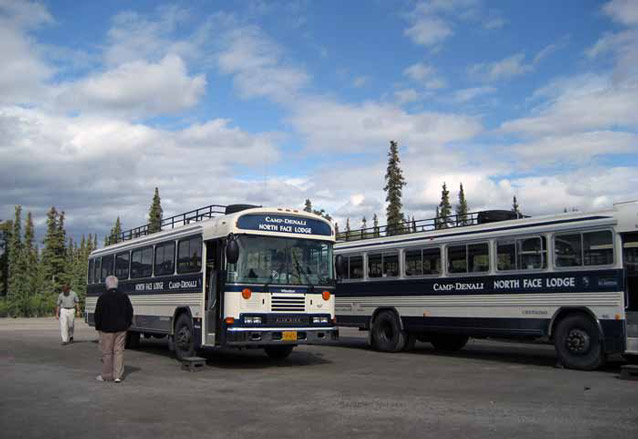
Maximizing the Economic Value of Alaska Wilderness
Both economic theory and the evidence to date suggest that to maximize the long-term economic benefits of conservation lands, Alaskans and federal land managers will need to do three things.
The first and most important task is to protect the “Alaska difference”—those fundamental attributes of Alaska’s large intact ecosystems and their wilderness character. This is easier said than done. It is almost inevitable that individual residents, businesses, and visitors will, consciously or not, chip away at the integrity of Alaska’s wildness. In some areas the degradation has been rigorously measured (Twardock et al. 2010).
Second, Alaskans must be somewhat patient. Time is on our side when it comes to extracting economic value from wilderness. The global supply of wilderness is decreasing while the demand for Alaska nature-based tourism is growing (Colt et al. 2002, Dugan et al. 2009). Taken together, these shifts in supply and demand mean that the “effective price” of Alaska’s wilderness is likely to steadily increase.
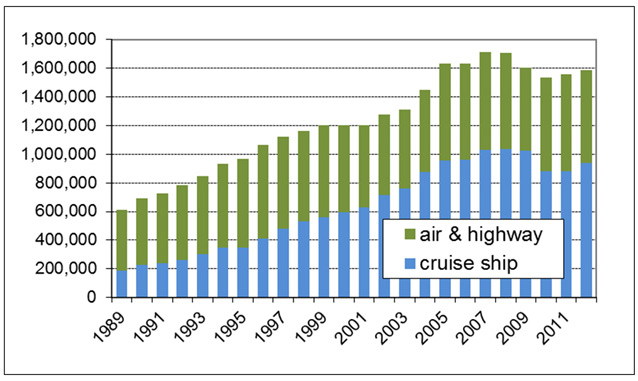
Source: Alaska Visitor Statistics Program
Finally, it is important to remember that wilderness and conservation lands are just one of many required inputs to tourism, subsistence, and fish production. Other important inputs include environmentally benign physical access, business talent, and capital investment in supporting infrastructure. Innovative transportation options that can bring more people into the Alaska wilderness with less environmental impact are a good place to start. Cruise ships (Figure 3) could be powered by natural gas. Double-decker Denali buses (Figure 4) might increase road capacity without affecting wildlife (assuming they can be accommodated without major road reconstruction). Increasing opportunities for remote rural gateway communities to participate in park planning could also help local residents to capture more jobs and income from their neighboring lands (Fay et al. 2005).
Looking ahead, it is clear that Alaska’s wilderness ecosystems will become increasingly valuable assets in a crowded urban world. If Alaska’s wildlands, wildlife, and ecological integrity are cared for with respect, the contribution of wilderness and conservation lands to the Alaska economy and to people everywhere will be significant, positive, increasing, and enduring.
References
Bright, L. 1985.
Patterns of tourism in southeast Alaska: an analysis of the impact of wilderness designations on the tourism industry. Fairbanks: M.S. Thesis, School of Agriculture and Land Resources Management.
Colt, S., S. Martin, J. Mieren, and M. Tomeo. 2002.
Recreation and tourism in south-central Alaska: patterns and prospects. General Technical Report PNW-GTR-551. Portland, OR: U.S. Department of Agriculture, Forest Service, Pacific Northwest Research Station.
Deller, S., T. Tsai, D. Marcouiller, and D. English. 2001.
The Role of Amenities and Quality of Life in Rural Economic Growth. American Journal of Agricultural Economics. 83(2), 352–365.
Dugan, D; G. Fay, H. Griego, and S. Colt. 2009.
Nature-based tourism in Southeast Alaska. Anchorage: ISER Working Paper 2009.1. http://www.iser.uaa.alaska.edu/Publi-cations/workingpapers/WP2009%201_SEnbt_final.pdf
Fay, G., and N. Christensen. 2012.
Economic Significance Analysis of Visitation to Remote Alaska Public Lands: A Case Study of Katmai National Park and Preserve. The George Wright Society Forum, vol. 29, no. 1, 2012.
Fay, G., and N. Christensen. 2010.
Katmai National Park and Preserve Economic Impact Analysis and Model Documentation. Prepared for National Park Conservation Association and National Park Service, Katmai National Park and Preserve.
Fay, G., S. Miller, and D. McCollum. 2005.
Tourism Development Opportunities in Rural National Park Gateway Communities in Alaska. Prepared for the National Park Service.
Goldsmith, S., A. Hill, and T. Hull. 1998
Economic assessment of Bristol Bay area national wildlife refuges: Alaska Peninsula/Becharof, Izembek, Togiak. Prepared for U.S. Fish and Wildlife Service. Anchorage: Institute of Social and Economic Research.
Goldsmith, S., and S. Martin. 2001.
ANILCA and the Seward economy. Anchorage: Institute of Social and Economic Research. www.iser.uaa.alaska.edu/Publications/ANILCA_Final.pdf
Haley, S., G. Fay, and J. Angvik. 2007.
Viable Business Enterprises for Rural Alaska. Anchorage: University of Alaska Anchorage, Institute of Social and Economic Research. Prepared for the USDA, Rural Development-Alaska.
Headwaters Economics. 2012.
West Is Best: Protected Lands Promote Jobs and Higher Incomes. Bozeman: Headwaters Economics.
Holmes, F., and W. Hecox. 2004.
Does Wilderness Impoverish Rural Regions? International Journal of Wilderness, 10(3), 34-39.
Hull, T., and L. Leask. 2000.
Dividing Alaska, 1867-2000: changing land ownership and land management. Alaska Review of Social and Economic Conditions 32(1) (November): 1-16.
McDowell Group. 2012.
Alaska Visitor Statistics Program VI Summer 2011. Prepared for State of Alaska Department of Commerce, Community, & Economic Development, Division of Economic Development. http://commerce.alaska.gov/dnn/Portals/6/pub/TourismResearch/AVSP/2011and2012/Summer/02%20 2011AVSP-FullReport.pdf
McDowell Group. 2013.
Economic Impact of Alaska’s Visitor Industry 2011-12. http://commerce.alaska.gov/dnn/Portals/6/pub/Visitor_Indus-try_Impacts_2_13.pdf
Rasker, R., B. Alexander, J. van den Noort, and J. Carter. 2004.
Prosperity in the 21st Century West: The Role of Protected Public Lands. Tucson: Sonoran Institute.
Twardock, P., C. Monz, M. Smith, and S. Colt. 2010.
Long-term changes in resource conditions on backcountry campsites in Prince William Sound, Alaska USA. Northwest Science 84(3): 223-232.
Part of a series of articles titled Alaska Park Science - Volume 13 Issue 1: Wilderness in Alaska.
Last updated: October 26, 2021
